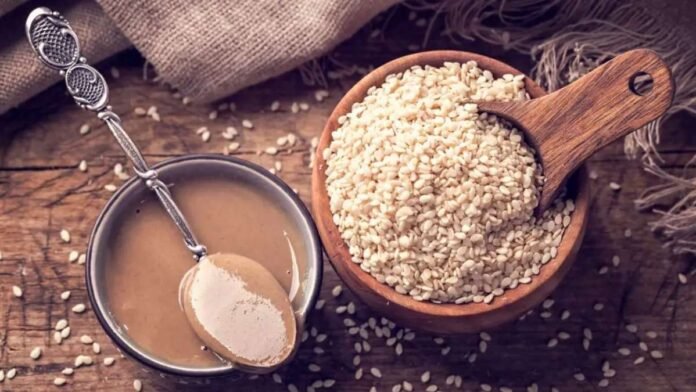Tahini, a smooth, nutty paste of mashed sesame seeds, has become a superfood globally. This gourmet jewel is not just nutritious but also tasty.
The Nutrients of Tahini
Tahini’s nutrients boost diets. Energy and fullness come from this healthy fat, protein, and fiber champion. Another stuff! Tahini contains calcium, iron, magnesium, phosphorus, and zinc. Healthy body function requires micronutrients.
Protecting Heart with Tahini
Tahini’s healthy fats pleasure and protect the heart. Monounsaturated and polyunsaturated fats reduce cholesterol. Lignans and antioxidants are in tahini. These compounds improve heart health and protection.
Tahini Strengthens Bones
Calcium in tahini supports bones. Regularly eating tahini strengthens bones. Vegans and dairy-free people trying to get enough calcium will benefit. A tahini-rich diet prevents osteoporosis and strengthens bones.
Tahini regulates glucose.
Tahini has a low GI despite its richness. Diabetics and others trying to control blood sugar love tahini since it doesn’t raise it. Protein, healthy fats, and fiber make tahini great. This trio modulates blood sugar by controlling hunger and fullness.
Tahini Aids Digestion
High fiber content aids tahini digestion. Natural fiber helps with constipation and bowel movements. Sesamolin and sesamin in tahini. Anti-inflammatory and antioxidant, they boost gut health.
Beyond basic tahini flexibility
Besides its health benefits, tahini is used in cooking. Smooth and nutty, tahini has many uses.
Classic: Hummus: Tahini-based middle eastern chickpea dip. Tahini, chickpeas, olive oil, lemon juice, and garlic make a creamy, delicious pita bread, veggie, or cracker spread.
Tahini improves salads and sauces. Tahini produces a colorful salad dressing with lemon juice, garlic, and herbs or a delicious grilled meat and vegetable dipping sauce with yogurt, spices, and honey.
Tahini gives baked goods nuttiness. Tahini makes a rich, fragrant banana bread or can replace nut butter or oil in cookies and brownies.
Unexpected Turn: Try It! Tahini surprises in smoothies, porridge, meat and tofu marinades.
Choosing Tahini: Quality
Tahini should be high-quality for taste and health. Consider these tips:
Read the Label: Tahini should be 100% toasted sesame seeds. Avoid oil, sugar, and preservatives.
Color Matters: Select light-tan or beige tahini. Overroasted dark seeds taste harsh.
Smooth, pourable tahini with natural oil separation is ideal. Olive oil thickens tahini.
Tips: Store tahini in an airtight jar in a dark, cool cupboard. Some prefer the first few weeks of freshness, but tahini can last months.
Sustainability: Drought-resistant sesame seeds make tahini more sustainable than other nut butters.
Tahini’s creamy texture and rich flavor make it a safe and delicious peanut butter substitute for nut allergy sufferers.
Tahini originated in the Middle East, but has become a superfood globally. It improves digestion, blood sugar, heart, and bone. Quality tahini produced with pure sesame seeds improves advantages.
Tahini is multifunctional beyond nutrition. Tahini adds nuttiness to hummus, sauces, baked products, and smoothies. Also eco- and allergy-friendly.
Discover tahini’s creamy goodness, culinary potential, and ancient superfood status.



